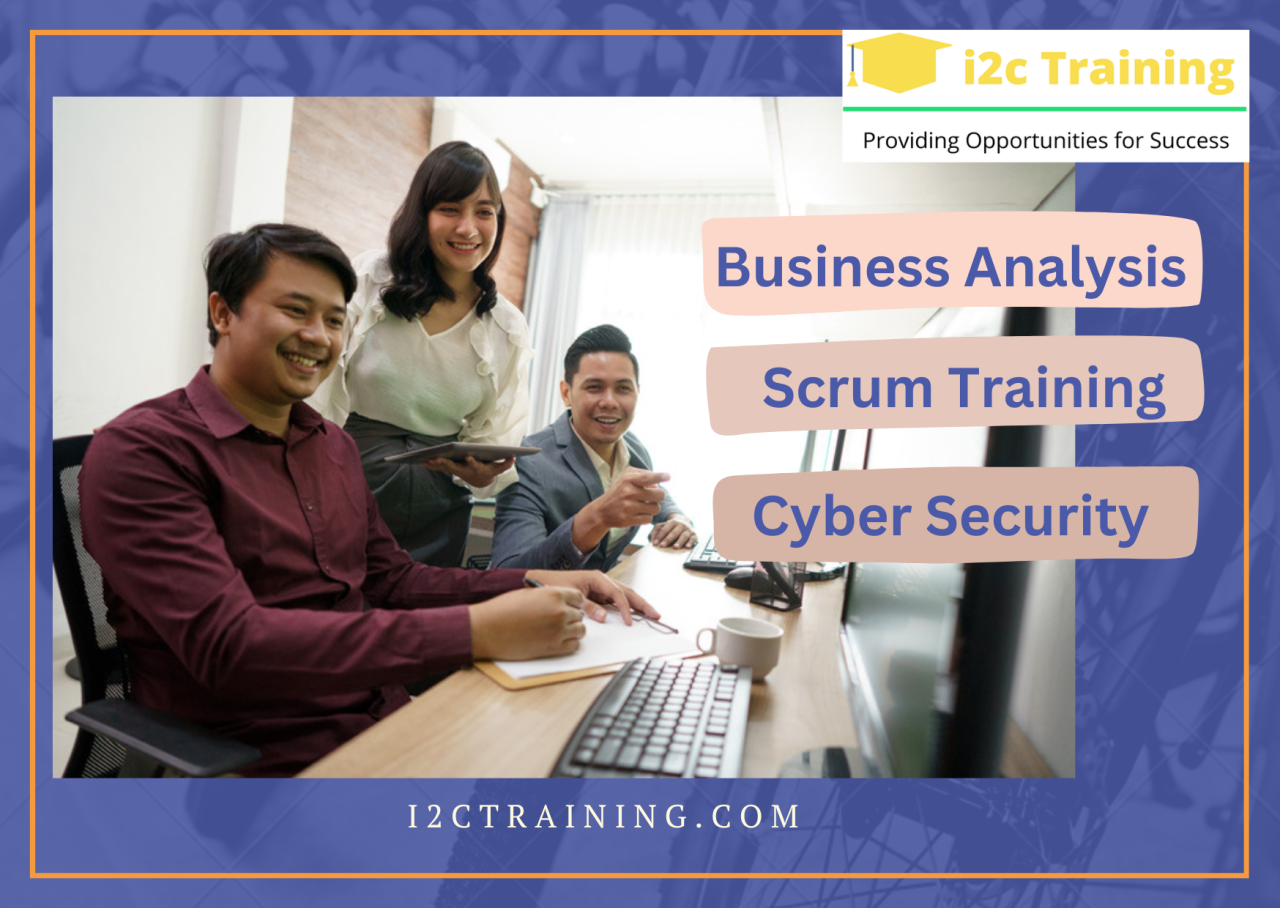Choosing the right IT courses based on career goals is crucial for a successful career in the tech industry. The vast landscape of IT offers diverse career paths, each demanding specific skills and knowledge. This guide will help you navigate this landscape, matching your aspirations with the right educational path, ensuring you invest your time and resources wisely.
We’ll cover everything from identifying your career goals and selecting appropriate courses to evaluating course providers and building a personalized learning plan for continued success.
We’ll explore various IT career paths, detailing the skills and salary expectations for each. Then, we’ll delve into the specifics of different IT certifications and courses, comparing online and in-person learning options. Finally, we’ll provide a framework for creating a realistic learning plan that includes practical experience, continuous learning, and networking strategies, setting you on the path to a fulfilling and successful IT career.
Picking the right IT courses is key to landing your dream tech job. Want a high-paying role? Check out this article on Who are Canada’s top-earning CEOs and how much do they make? to see what’s possible, and then map out your IT training to reach those salary levels. Smart course choices will help you climb the career ladder faster, opening doors to leadership positions and potentially even a CEO title someday!
Choosing the Right IT Courses Based on Career Goals
Navigating the world of IT courses can feel overwhelming. With countless options available, selecting the right path requires careful consideration of your career aspirations. This guide provides a structured approach to choosing IT courses that align with your specific goals, maximizing your investment in time and resources.
Identifying Career Goals in IT

The IT sector offers a diverse range of career paths, each demanding unique skill sets and educational backgrounds. Understanding these differences is crucial for making informed decisions about your training.
Defining your career aspirations involves self-reflection on your interests, strengths, and long-term ambitions. Consider what aspects of IT excite you – is it the creative problem-solving of software development, the analytical precision of data science, or the security-focused challenges of cybersecurity? Once you have a clearer idea of your interests, research the various career paths available.
A step-by-step guide to defining your career aspirations includes: identifying your interests and skills, researching various IT roles, assessing your strengths and weaknesses against those roles, setting realistic goals, and finally, creating a plan to achieve those goals.
| Career Path | Required Skills | Average Salary (USD – Approximate) | Educational Requirements |
|---|---|---|---|
| Software Developer | Programming (Java, Python, C++), Software Design, Problem-solving, Version Control (Git) | $80,000 – $150,000 | Bachelor’s degree in Computer Science or related field, often supplemented by certifications |
| Data Scientist | Statistical analysis, Machine learning, Data visualization, Programming (Python, R), Database management | $90,000 – $180,000 | Master’s degree in Data Science, Statistics, or related field, often with experience in data analysis |
| Cybersecurity Analyst | Network security, Ethical hacking, Security protocols, Incident response, Penetration testing | $75,000 – $140,000 | Bachelor’s degree in Cybersecurity, Computer Science, or related field, often with relevant certifications (e.g., CompTIA Security+, CEH) |
| Network Engineer | Networking protocols (TCP/IP, BGP, OSPF), Network security, Troubleshooting, Cloud technologies | $70,000 – $120,000 | Associate’s or Bachelor’s degree in Networking or related field, often with certifications (e.g., CCNA, CCNP) |
Matching IT Courses to Career Goals
Once you’ve identified your desired career path, selecting the right IT courses becomes more straightforward. Different certifications cater to specific roles and skill requirements. For instance, a CompTIA A+ certification is ideal for entry-level help desk roles, while a CISSP certification is more suited for senior cybersecurity positions.
Entry-level courses often focus on foundational knowledge and skills, while advanced courses delve into specialized areas and industry best practices. Choosing the right course depends on your existing skills and career goals. For example, a beginner might start with a course on fundamental programming concepts, while an experienced professional might pursue a course on advanced database administration or cloud architecture.
Here’s a brief overview of three popular IT courses and their alignment with career goals:
- Google IT Support Professional Certificate: This course provides a foundation in IT support, preparing individuals for entry-level roles like help desk technicians or IT support specialists. It covers troubleshooting, networking, operating systems, and customer service skills.
- Microsoft Certified: Azure Fundamentals: This certification is suitable for individuals aiming for cloud computing roles. It covers core cloud concepts, Azure services, and security considerations. It’s beneficial for aspiring cloud administrators or cloud engineers.
- CompTIA Security+: This certification is ideal for those pursuing a career in cybersecurity. It covers network security, cryptography, risk management, and compliance. It’s a valuable asset for aspiring security analysts or penetration testers.
The decision-making process for selecting IT courses can be visualized as a flowchart. It starts with identifying your career goals, followed by researching relevant certifications and courses. Next, evaluate course providers and formats before creating a personalized learning plan.
Evaluating Course Providers and Formats

Choosing between online and in-person training depends on your learning style, schedule, and budget. Online courses offer flexibility and accessibility, while in-person courses provide direct interaction with instructors and peers. Factors to consider when choosing a provider include accreditation, instructor experience, student reviews, and course content.
A checklist for evaluating course providers might include:
- Accreditation and recognition by industry bodies
- Instructor qualifications and experience
- Student reviews and testimonials
- Course curriculum and learning materials
- Support services offered (e.g., technical support, career services)
- Cost and payment options
Examples of reputable IT training institutions include Coursera, edX, Udemy, and various community colleges and universities offering IT programs.
Building a Personalized Learning Plan, Choosing the right IT courses based on career goals

A realistic timeline is crucial for successful completion of your chosen courses. Consider the course duration, your available study time, and potential work commitments. Incorporating practical experience through internships or volunteer work alongside theoretical learning significantly enhances your skills and makes you a more competitive candidate.
Picking the right IT courses is key – think of it like a footballer choosing a club. Just like the Alexander-Arnold decision to join Real Madrid branded ‘100 percent shows, a big move needs careful consideration. Similarly, your career path depends on aligning your IT training with your specific goals; research different specializations to find the perfect fit for your future.
Resources for finding internships or volunteer opportunities include online job boards (Indeed, LinkedIn), university career services, and professional networking sites.
- Sample Learning Plan:
- Course: Google IT Support Professional Certificate, Duration: 6 months, Completion Date: December 2024
- Course: CompTIA A+, Duration: 3 months, Completion Date: March 2025
- Internship: IT Support Intern, Duration: 3 months, Start Date: June 2025
Continuous Learning and Skill Development
The IT field is constantly evolving, requiring continuous learning and skill development to stay competitive. Strategies for professional development include attending conferences, pursuing advanced certifications, participating in online communities, and engaging in self-directed learning through online courses and tutorials.
Networking with other IT professionals through industry events, online forums, and professional organizations expands your knowledge base, provides access to mentorship opportunities, and opens doors to new career prospects.
The cyclical nature of learning and skill development in IT can be visualized as a continuous loop: You start with foundational knowledge, then build specialized skills through training and experience. This leads to new opportunities, which in turn necessitate further learning and upskilling to maintain your competitiveness and advance your career. The cycle then repeats, driving continuous growth and adaptation within the ever-changing landscape of the IT industry.
Last Point

Ultimately, choosing the right IT courses is a journey, not a destination. By carefully considering your career goals, researching course options, and developing a personalized learning plan, you can equip yourself with the skills and knowledge necessary to thrive in the ever-evolving world of technology. Remember to continuously update your skills and network with professionals in the field to stay ahead of the curve.
With dedication and the right training, a rewarding career in IT awaits!
FAQ Resource: Choosing The Right IT Courses Based On Career Goals
What if I’m unsure about my IT career goals?
Start by exploring different IT roles and their responsibilities. Consider your interests and strengths. Online resources and career counseling can help you identify potential paths.
How long does it typically take to complete an IT course?
Course durations vary greatly depending on the subject, intensity, and provider. Some courses can be completed in a few weeks, while others may take several months or even years.
Are there any financial aid options for IT courses?
Picking the right IT courses is key – you wouldn’t want to waste time and money on something irrelevant to your dream job, right? Think about your career aspirations carefully; it’s like Mohamed Salah choosing his next move – he wants something “special,” as this article reveals: Mohamed Salah exclusive: Liverpool forward wants ‘special. Similarly, your IT training should be just as focused and impactful to get you where you want to be.
So, research different specializations and find your perfect fit.
Yes, many institutions offer scholarships, grants, and loans to help students finance their education. Check with individual course providers and government agencies for available options.
How important is practical experience in IT?
Practical experience is crucial. Look for internships, volunteer opportunities, or personal projects to build your portfolio and demonstrate your skills to potential employers.
